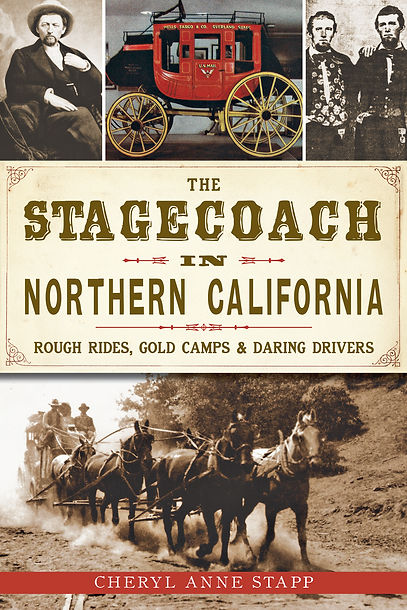
The rumbling, swaying coach-and-six is gone now—but what a glorious run it had! Experienced New England stagemen followed thousands of bedazzled gold rushers out west in 1849 to create the west’s first public transportation. The stagecoach delivered mail, subjected its paying passengers to bone-bruising, sometimes terrifying travel…and transported millions of dollars in gold that fueled California’s unprecedented, rapid development.
Potential hazards of the road were legion, from overflowed creeks to overturned vehicles. Nonetheless, skilled “whips” sped their teams across level roads and swung them around mountain turns within an inch of yearning precipices, because the coach must always arrive on time. Female passengers complained of the men’s cigar smoke; male passengers complained of unruly children.
As a class, stage robbers began their careers late: the first hold-up of a moving stage didn’t occur until 1856, seven years into the staging era—but then made up for their late start by robbing coaches well into the twentieth century. Some were apprehended after dramatic shoot-outs; others, like Black Bart, eluded capture for years.
The stagecoach rolled over California roads for 70 years, its routes first diminished by the railroad’s steadily-advancing tracks, and finally eliminated by the automobile. The Stagecoach in Northern California: Rough Rides, Gold Camps & Daring Drivers, is a rousing account of visionary men, legendary drivers Hank Monk and Charley Parkhurst, half-wild horses, and gold-country stage stations.
